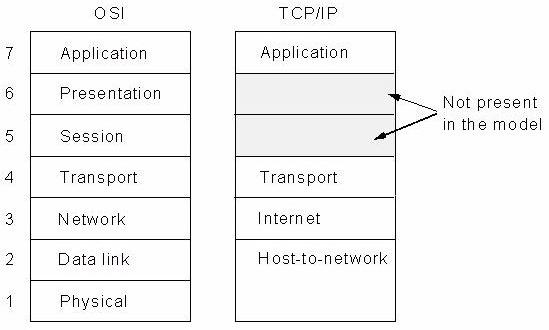History of TCP/IP
The ARPANET was a research network sponsored by the DoD (U. S. Department of defense). It connected hundreds of universities and government installations using leased telephone lines.
When satellite and radio networks were added, the existing protocols had trouble inter-networking with them, so new reference architecture was needed.
DoD also wanted connections to remain intact as long as the source and destination machines were functioning; some of the machines or transmissions lines in between were suddenly put out of operation. Furthermore, a flexible architecture was needed, ranging from transferring files to real-time speech transmission.
Thus the ability to connect multiple networks together in a seamless way, this architecture became known as TCP/IP Reference Model.
The TCP/IP Reference Model has four layers. These are as follows.
The Internet Layer
A packet-switching network based on a connectionless internetwork layer or internet layer.
The internet layer defines an official packet format and protocol called IP (Internet Protocol)
The main task is to permit host to insert IP (Internet Protocol) packets into any network and have them travel independently to the destination in a different order than they were sent. The higher layers then to rearrange them, if it necessary.
Packet routing is avoiding congestion.
The TCP/IP internet layer is very similar in functionality to the OSI network layer.
Figure is as follows.
Fig. The TCP/IP reference model.
The Transport Layer
The layer above the internet layer is called the transport layer.
The design of this layer is to allow conversation of peer entities for both source and destination just like the OSI reference model.
In this layer two end-to-end protocols have been defined: TCP (Transmission Control Protocol) and UDP (User Datagram Protocol).
a. TCP (Transmission Control Protocol)
TCP is a reliable connection-oriented protocol that carries byte stream from source machine and to delivered destination machine in the internet without any error.
It fragments the incoming byte stream into discrete messages and passes each one onto the internet layer.
At the destination, the receiving TCP process arranged the received messages into the output stream.
TCP also handles flow control to make sure a fast sender cannot swamp a slow receiver.
b. UDP (User Datagram Protocol)
UDP is an unreliable, connectionless protocol used for those applications that do not want TCP’s sequencing or flow control and wish to provide their own.
It is also widely used for one-shot, client-server type request-reply quires and applications in which prompt delivery is more important than accurate delivery.
The relation of IP, TCP, and UDP is shown as follows.
Fig. Protocols and networks in the TCP/IP model initially.
The Application Layer
On the top of transport layer is the application layer. It contains all the higher-level protocols.
The early ones included virtual terminal (TELNET) protocol that allows user on one machine to log into a remote machine and work there.
The file transfer protocol (FTP) provides a way to move data efficiently from one machine to another.
Electronic mail (SMTP) is a specialized protocol for transferring a file.
Domain Name Service (DNS) protocol for mapping host names onto their network addresses.
Network News Transfer Protocol (NNTP) used for moving news articles around and Hyper Text Transfer Protocol (HTTP) used for fetching pages on the World Wide Web, and many others.
The Host-to-Network Layer
Below the internet layer, the host-to-network layer is there. The TCP/IP reference model does not really say much about what happens here, except the host has to connect to the network using some protocol so it can send IP packets over it.
Well, how you found this article, is this useful? I'm sure this will help you more. If you want more information please let me know through comments in the right below.
Subscribed to the My Computer Tutors for updates. I will keep updating to you with latest tutorials.


Comments
Post a Comment
Your comment will inspire me, Please leave your comment